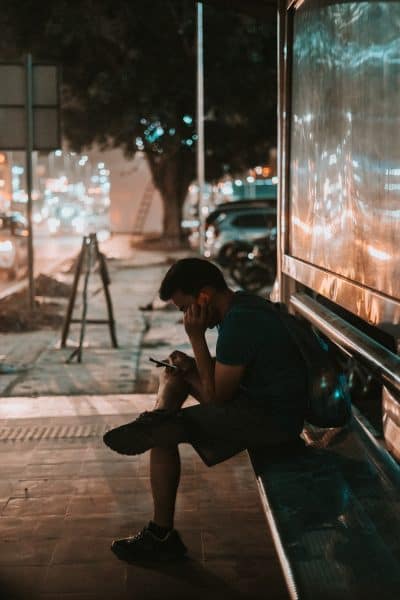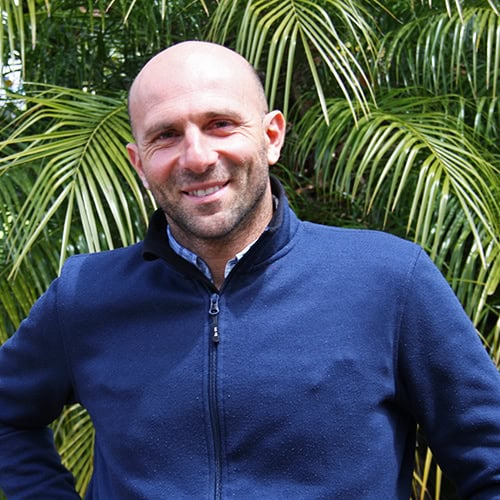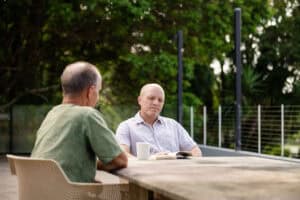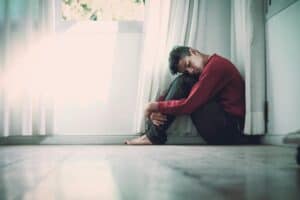Depression is more than just a low mood; it is a consistent and ongoing medical condition that can seriously affect the way we experience life. As many as one million Australians are affected by depression each year. To understand what depression is, we need to examine the types of depression that may exist. These can range from relatively mild, to more severe and debilitating. It’s important to note that all of us can experience some form of sadness at various times in our lives, but those who have depression experience an ongoing and debilitating mood which affects almost every aspect of their day-to-day lives. Depression and anxiety can have serious repercussions for a person’s physical and mental health. However, with proper treatment and early detection, symptoms can be managed effectively. The sooner depression is detected, the sooner treatment can be sought. Download our Functional Tools For Overcoming Depression guide here –
What is depression?
Simply put, the definition of depression is a mental health disorder characterised by a consistently depressed mood and a loss of interest in normal daily activities. Usually, depression is not necessarily caused by any one event, rather, it may be caused by a combination of psychological and social distress or trauma.
The difference between depression and “feeling down”
We all feel depressed at some point in our lives, however, these feelings are usually caused by external factors, and are typically resolved over time, as circumstances change. Sadness is a normal human emotion. In fact, we would not be human without it! Sometimes, we can even feel down for no apparent reason at all. However, when we experience intense feelings of sadness that don’t go away after more than two weeks on end, and these feelings start seriously affecting the way we live our lives, we may need to start seeking help. Often people describe depression as having a dark cloud above their head, or of being in a thick fog they cannot escape. Others feel nothing at all; they may feel emotionless and numb. Luckily, there is a light at the end of the tunnel. There are many different treatments for depression to explore and it is fully possible to feel better over time with a comprehensive treatment plan

Types of depression
There are multiple types of depression, ranging from the more minor to very severe, however, all kinds of depression can be debilitating, and should be treated as such. It’s important to know which kind of depression you have, so you and your mental health practitioners can gauge and implement the most effective treatment, and get help sooner rather than later. Major depressive disorder: Major depression is the most common form of depression in Australia. It may also be called clinical depression or major depressive disorder. This disorder is characterised by an ongoing low mood, loss of interest in usual activities, as well as other physical and mental signs and symptoms. Major depressive disorder can range from mild to severe, however, even mild depression can impair social and occupational functioning. Melancholia: This term is used to describe a subtype of depression classified by extreme guilt and a sense of despair that isn’t linked to experiencing loss or grief. Melancholia involves many of the physical symptoms of depression, like slowed movement and loss of appetite. Psychotic depression: Psychotic depression involves a person with depressive disorder experiencing psychosis. This may involve hallucinations, delusions, and paranoia. During psychosis, a person may think they are bad or evil, or that they’re being watched or followed. Antenatal or postnatal depression: Antenatal or postnatal depression is very common. Almost 80% of women experience the “baby blues”; general stress or sadness immediately following the birth of a baby, mainly due to hormonal changes. However, ongoing depression is common too, with almost 10% of women experiencing depression during pregnancy and 16% after pregnancy. Bipolar disorder: This disorder is characterised by periods of intense depression as well as periods of mania. Mania is the opposite of depression and can involve having high levels of energy, racing thoughts, and little need for sleep. Often the person can lose touch with reality and have episodes of psychosis involving hallucinations or delusions. The mania is often followed with intense depressive episodes and experiencing normal moods in between. Stress and conflict can often trigger periods of mania or depression. Bipolar disorder can be difficult to diagnose due to the often irregular and unpredictable moods experienced, which are difficult to monitor by mental health professionals. Dysthymic Disorder: Dysthymia is similar to major depression, but is usually longer-lasting. Symptoms may go on for a prolonged period of two years or more. Because of this, people may not realise they have depression. They may simply think that this is the way they are. There are other types of depression that exist and the treatment for depression can change slightly according to the type of depression being experienced, so it is important to diagnose as early as possible. But no matter what type of depression is being experienced, different treatments may be more effective or more convenient for different people. Early detection is important so various treatment options can be explored. To learn more about depression, download our Functional Tools For Overcoming Depression guide here –
If you think you or someone you know may be experiencing depression, contact us today to start exploring our treatment options or simply to find out more information.
Emanuele Latino
Program Director & Psychologist

Emanuele has a compassionate approach to clients’ struggles, in order to promote awareness and initiate together the transformative process. His treatment approaches range from Gestalt, Emotionally Focused Therapy, Dialectical and Cognitive Behaviour Therapy, EMDR, ACT, Neuropsychotherapy, Sensorymotor Psychotherapy and Cape Cod Model for Couple Therapy.



